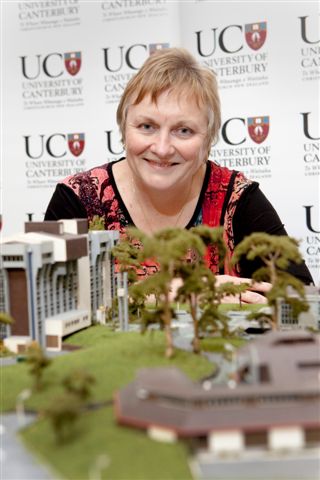University of Canterbury planning for the next 20 years

The University of Canterbury is developing a master plan for a $1 billion investment in infrastructure at its Ilam campus over the next 20 years.
Today it has released details of several development scenarios which, Vice-Chancellor Dr Rod Carr says, have been informed by the University’s commitment to supporting a world-class learning environment for staff and students. The need to make the campus more accessible has also been considered.
“Spaces need to be more inviting and supportive of learning in the 21st century. It is difficult for visitors and newcomers to find their way around and connect with the life of the University,” Dr Carr says.
He says the campus has grown in a rather piecemeal way and a more integrated plan is needed to address issues such as the lack of a central campus hub, inflexible learning spaces and no recognised main entrance to the University.
Pro-Vice-Chancellor (Learning Resources) Professor Sue McKnight (pictured) - who is responsible for the University's library, ICT and facilities management services - says current spaces within UC's buildings have proved to be inflexible in their use.
"Research spaces need upgrading to match new standards and aspirations. New technologies have changed styles of teaching and learning. Student behaviour and expectations have also changed, weakening the distinctions between formal learning and social learning spaces. These all require a significant shift in the quality and mix of spaces within our learning environment," Professor McKnight says.
Key elements of the draft master plan include a new gateway building to provide integrated student services and enable easier access to campus activities for students and visitors (which could incorporate a space for music performance); the expansion of science, engineering and arts facilities; possible re-location of facilities for sport and recreation; and possible re-location of the College of Education to bring it closer to the University’s other colleges.
“To support a world-class learning environment, we need to develop facilities that are fit-for-purpose in the 21st century and allow us to continue to attract talented students and faculty from within New Zealand and around the world,” says Dr Carr.
The 20-year investment is likely to be split between the construction of new buildings and refurbishment of existing facilities.
Although final decisions will rest with the University Council and much of the plan focuses on the teaching, learning and research needs of students and staff, the University is interested in the response of the wider community. Further information is available at www.canterbury.ac.nz/theuni/campus_plan/. Comments can be emailed to masterplan@canterbury.co.nz.
Feedback from the current information programme will inform development of the master plan document that will be presented to the University of Canterbury Council in February 2011.
The draft development scenarios have been developed with input from various stakeholders including current students who, Dr Carr says, have expressed a desire for a central hub for study and social activities; improved food and retail services; a larger recreation centre; and improved security, transport connections and car parking.
